Member in the Spotlight: Vic
70 kilometres north of Barcelona, one city is making a name for itself in the world of transport. With just under 50,000 inhabitants, Vic is pushing for big changes on a small scale. From pedestrian-friendly streets and secure bicycle storage to flexible parking, Vic is committed to becoming a city tailored to human needs.
Interview with Joana Rodríguez Bergadà, Mobility Technician, Vic City Council, and Guillem Membrives Barniol, Deputy Councilor for Mobility, Vic City Council, elaborated by Quaid Cey.
When POLIS welcomed Vic to the network in 2022, the city’s ambition was clear: Vic aimed to offer its citizens and visitors a safe, accessible, and friendly urban landscape in which walking, biking, and public transport took precedence over private vehicles. Like Groningen, a fellow POLIS member and our most recent ‘Member in the Spotlight’, Vic wanted to make the quality of life its bottom line.
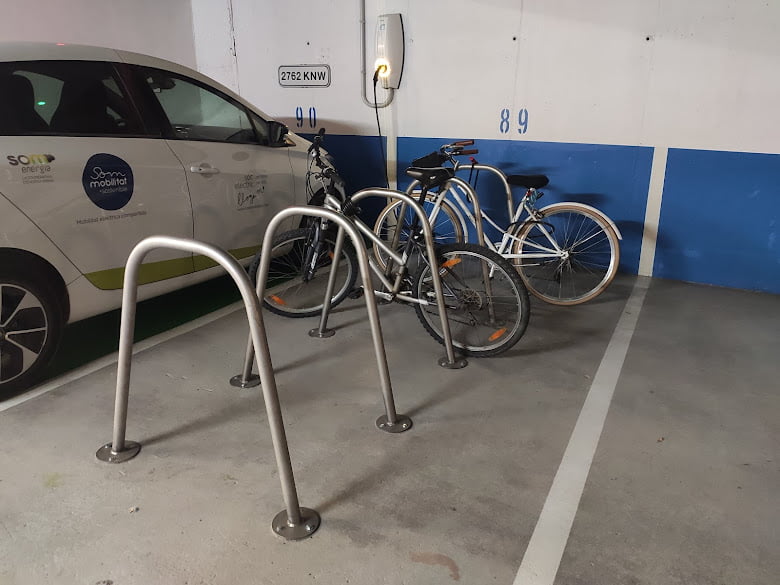
Making space for bicycles. Credit: Vic City Council
Before joining POLIS, Vic had already solidified its commitment to socially and environmentally sustainable mobility in three defining documents: its Municipal Urban Master Plan, its Sustainable Urban Mobility Plan (SUMP), and its Accessibility Plan. Together, these plans set a high bar for the city’s future development, ensuring that the safety and comfort of citizens would be foregrounded at every step of the way.
True to its promises, Vic has done much to prioritise active travel, low-emission transport, and user-oriented mobility digitalisation. With the overarching motto "Suma’t al Zero" (Join the Zero), the city has taken its goals for pollution and waste reduction into the realm of transport. Striving for fewer road accidents and transport-related emissions, Vic has enhanced its cycling network, made bicycle parking and repairs more accessible, restricted access of motorised vehicles to strategic zones of the city, and invested in its bus network.
To find out more about this medium-sized city’s growing mobility offer, we sat down with Joana Rodríguez Bergadà, Mobility Technician, Vic City Council, and Guillem Membrives Barniol, Deputy Councilor for Mobility, Vic City Council. They dove deeper into Vic’s progress toward sustainable mobility and explained how their city has moved past setbacks through an open dialogue with its citizens.
POLIS: Currently, what are Vic’s top mobility priorities? Which projects, policies, or technologies are being promoted at the moment to address these priorities?
In Vic, we have a Sustainable Urban Mobility Plan (SUMP), an Accessibility Plan, a Local Road Safety Plan, and a Sustainable Mobility Strategy for industrial estates, together with the neighbouring municipality, all of which are in force and which we need to implement as planned.
Our short-term objectives are:
- to create a new urban bus service that allows for more efficient and sustainable transport, adapted to the needs of users;
- to reduce the discontinuities in the existing network of cycle lanes;
- to listen to and hold regular meetings with all bicycle dealers – they know the market and the reasons why citizens decide to buy or postpone the purchase of an urban bicycle, therefore, we need to be on the same page as them;
- to design gamification technologies to encourage routine bicycle use.
- to initiate the development of the actions listed in our Sustainable Mobility Strategy within the industrial areas of Vic and Gurb;
- and to improve accessibility for pedestrians.
POLIS: When it comes to transport innovation, what unique challenges do small and medium-sized cities like Vic face? Conversely, what advantages does your city’s small size offer?
Our challenge is to make the use of public transport attractive and less costly in a city where other modes of transport are also very competitive.
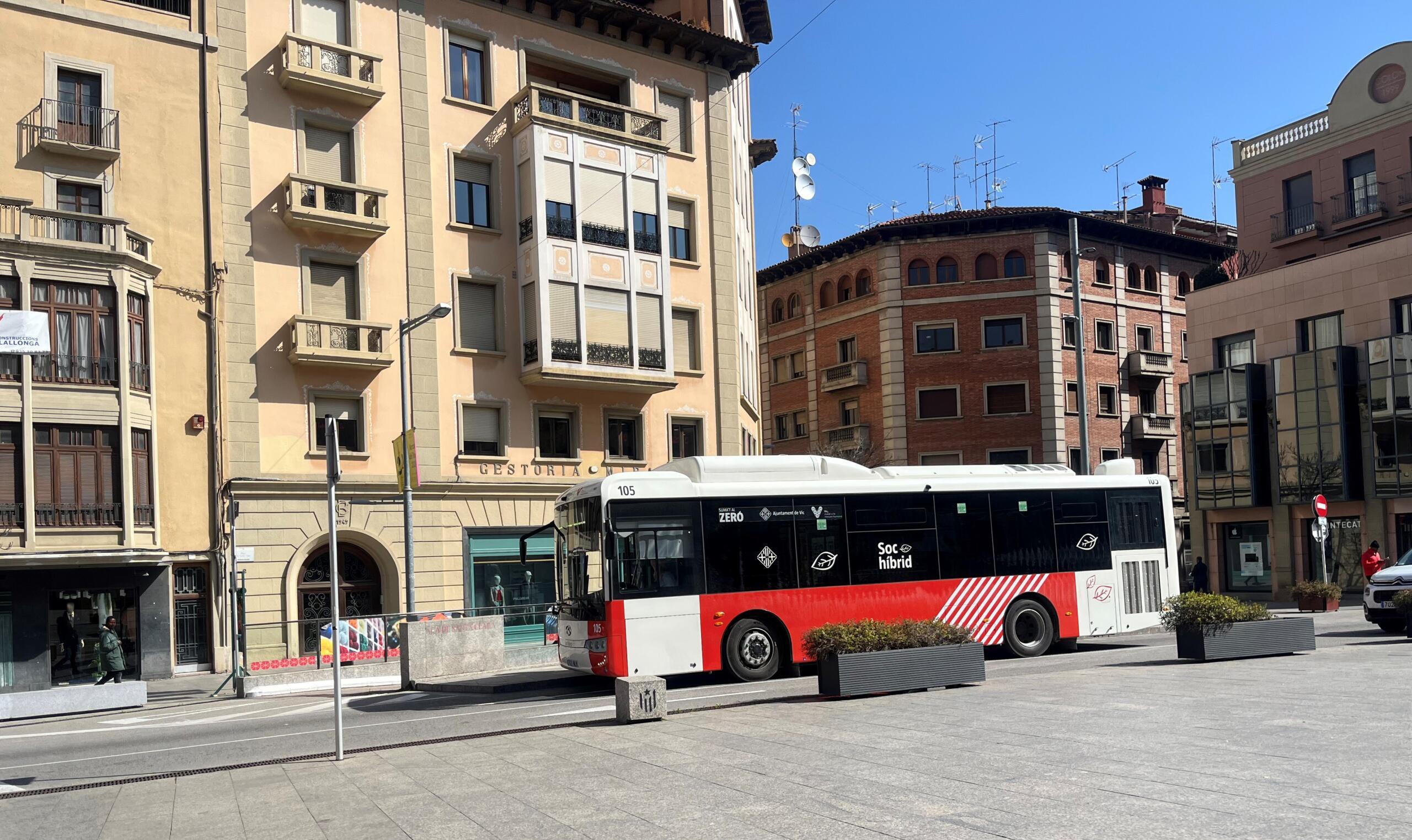
To boost public transport, Vic is rethinking its bus system. Credit: Vic City Council
In the case of Vic, where both the city and the surrounding region show very high use of private vehicles, another challenge is to change this habit for journeys where this use is not justified without creating a backlash.
In terms of advantages, you could say that we are in close contact with citizens, so it is relatively easy to reach our target population in each case and obtain immediate feedback on how they perceive mobility interventions.
POLIS: Vic has been involved in several mobility projects at the European level, including URBACT Healthy Cities and S+LOADZ, and has been a member of the POLIS network since 2022. How have these opportunities for collaboration with other cities in Europe benefitted Vic’s work on sustainable mobility?
Currently, we are part of the driving group and the local group of the URBACT “Beyond the urban” network, which aims to make regional mobility more sustainable, efficient, and useful for everyone.
Knowledge sharing has many benefits: on the one hand, you find cities with which you share challenges, and it is always good to talk about them. On the other hand, you see new ways to act or face future challenges. It is also very interesting and rewarding to be able to explain to other cities the things that we have worked on and that have been successful.
As you participate in more projects, more opportunities arise – it's great for restless cities like us, who are looking for continuous improvement!
POLIS: Can you tell us more about Vic’s “Pedestrian Islands”? How much of the city is covered by these islands? What benefits do pedestrian-only areas offer citizens?
In Vic, we have 5.7 km of roads regulated as ‘pedestrian blocks,’ distributed in four different blocks.
The first three were created in 2014, but they were already proposed in our first mobility study in 1982. The fourth was created in 2021.
These are pedestrian zones, but vehicles are allowed to enter for residential reasons or to load and unload goods, as they are areas with a high density of housing and commercial activity.
Vehicle access is controlled by cameras, and to control parking time, a pilot test was launched to monitor time and users with a mobile application.
These areas, which are mainly for pedestrians – though access to the necessary traffic is allowed for accredited vehicles – provide a more relaxed walking space, whether for residents, shoppers, workers, or those just passing through. They provide a quiet living area, reduce the risk of accidents, noise, and pollution, and, in short, offer a healthy and high-quality space in the middle of the city.
POLIS: As part of its sustainable mobility plans, Vic aims to progressively restrict access of motorised vehicles to specific zones of the city. How have citizens responded to these plans? Would you say there has been more support or more backlash?
As everywhere, we face adverse situations because of people who see these changes as a challenge to their comfort.
In this regard, being part of POLIS is very useful and comforting, as it encourages and inspires us to push past these impasses.
In the end, we know that this is the right way to go, and the citizens themselves will see their well-being increase over time, even if at the beginning it is difficult for them to understand the benefits.
POLIS: At the same time, Vic has been investing in new bicycle infrastructure, including secure, dedicated bicycle parking and repair locations. As a medium-sized city with protected historical features and limited space, how does Vic make way for this new infrastructure?
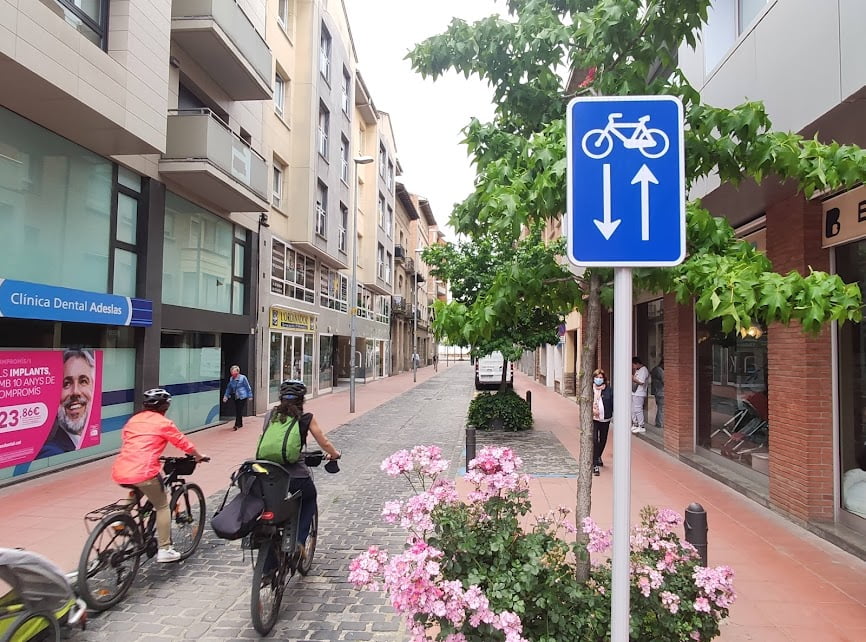
Two-way biking street. Credit: Vic City Council
Most of the city streets are indeed very narrow, and it is difficult to find sufficient space for each mode of transport. Therefore, we apply the following criteria to our cycling infrastructure:
- In the streets where the main bicycle network coincides with the main car network – usually main streets and wider streets – and in those streets that give access to educational or sports centres, we build segregated bicycle lanes on the road, reallocating space away from cars.
- On other streets, where the speed is already limited to 30 km/h, we encourage the shared use of space using vertical and horizontal signage, circulating in the same direction as cars.
- In the case of streets that provide access to educational or sports centres, we built a one-way bicycle lane in the opposite direction of cars – this last type of bicycle lane was inspired by that of La Rochelle!
- And lastly, on the streets that have been pacified, bicycles are allowed to circulate in both directions of traffic.
POLIS: Of course, active travel isn’t all that Vic is working on – the city has also tried to promote the use of public transport by adapting its bus timetables and routes and offering integrated ticketing for passengers. Overall, what impact have these changes had on the accessibility and appeal of public transport in Vic? Has the city seen an increase in the use of public transport thanks to these changes?
Public transport has been one of our challenges for years. We have been looking at how to adjust timetables, but the truth is that it is very complicated: Vic is a small and compact city, which is very easy to cross on foot, and the current urban bus network has a frequency similar to walking time. For various reasons, it has been losing more and more commercial speed in recent years.
In addition, Vic has a single school zone to ensure non-segregation, and this makes access to schools by public transport difficult: from any point in the city, it is necessary to arrive at another point in the city at the same time for multiple users.
Despite some small adjustments being made to our bus network, we are losing passengers year after year.
We are currently in the process of completely renovating the service. The city council will take over the contracting of the service, and we are already starting work on an assessment of demand to redefine bus lines and the management system.
POLIS: Vic also uses a mobile application called “Parkunload” to regulate parking in the city based on area and user type. Can you explain how this application works in practice and how it supports flexible parking?
We are very happy with this system for managing the occupation of public space.
In the case of parking areas for loading and unloading, it consists of placing a Bluetooth device at the beginning of the parking area, behind the vertical sign indicating the regulation of that area. This Bluetooth device, configured beforehand to match the type of users authorised to park, time and days, etc., is responsible for indicating to users whether they can park and controlling the parking time according to the type of user or vehicle. Users must download the application and register their vehicles, indicating the type of vehicle, its registration number, and whether it is a private individual or a professional who is loading and unloading goods.
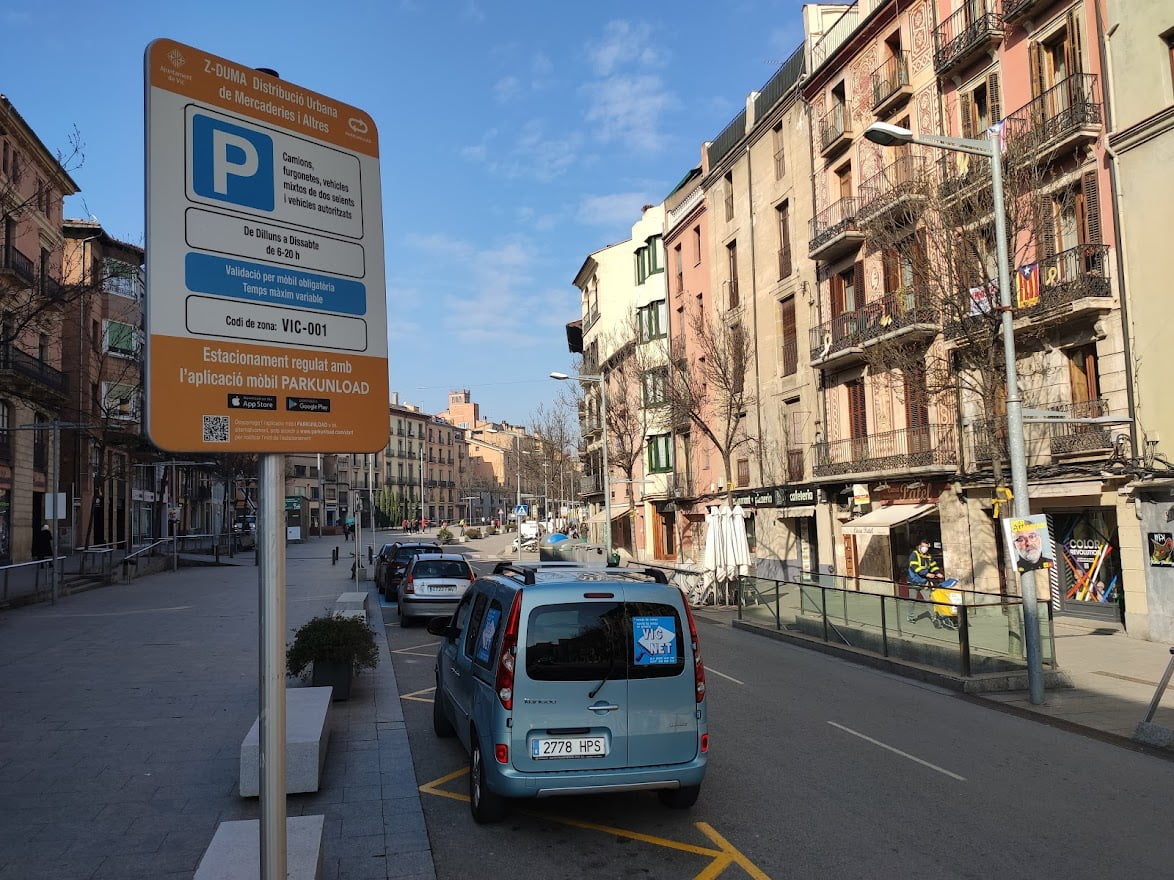
Parking spaces are regulated and monitored by the 'Parkunload' app. Credit: Vic City Council
Once parked in a zone regulated by this system, the only thing to do is to open the application and indicate that parking has started. The device identifies the type of user and, depending on the configuration, will indicate the time available for parking, starting a countdown. The user is notified via the app when there are five minutes left before the end of the allotted time, and when the time has run out. The driver must indicate the end of the parking period just before leaving. If this is not done, when the Bluetooth loses coverage, the parking is marked as completed.
This system requires a surveillance system, either through a mobile application at street level, where all vehicles authorised to park and the time they have available are listed or by scanning license plates with a camera.
Whichever means is used, when a car is detected outside of its authorised time allowance, or when it is parked and the user has not indicated the start of the parking period, the user is sanctioned.
The City Council has a back office where we can track user statistics (big data) and configure authorisations for each device.
POLIS: Finally, what advice would Vic give to other small and medium-sized cities looking to adopt an innovative approach to urban mobility?
They should not hesitate to try new things, but they should always begin with a pilot test.
In small and medium-sized cities, public officials are in close contact with citizens, which means that we can test new actions and receive near-immediate feedback from those affected. In turn, we can evaluate what works and what does not.
Running pilot tests helps us to explain to citizens that their participation is necessary to detect points for improvement and make changes where necessary, helping to get past the "mourning phase" that we mentioned earlier, which is always present when there is a change of habits or mobility rules.
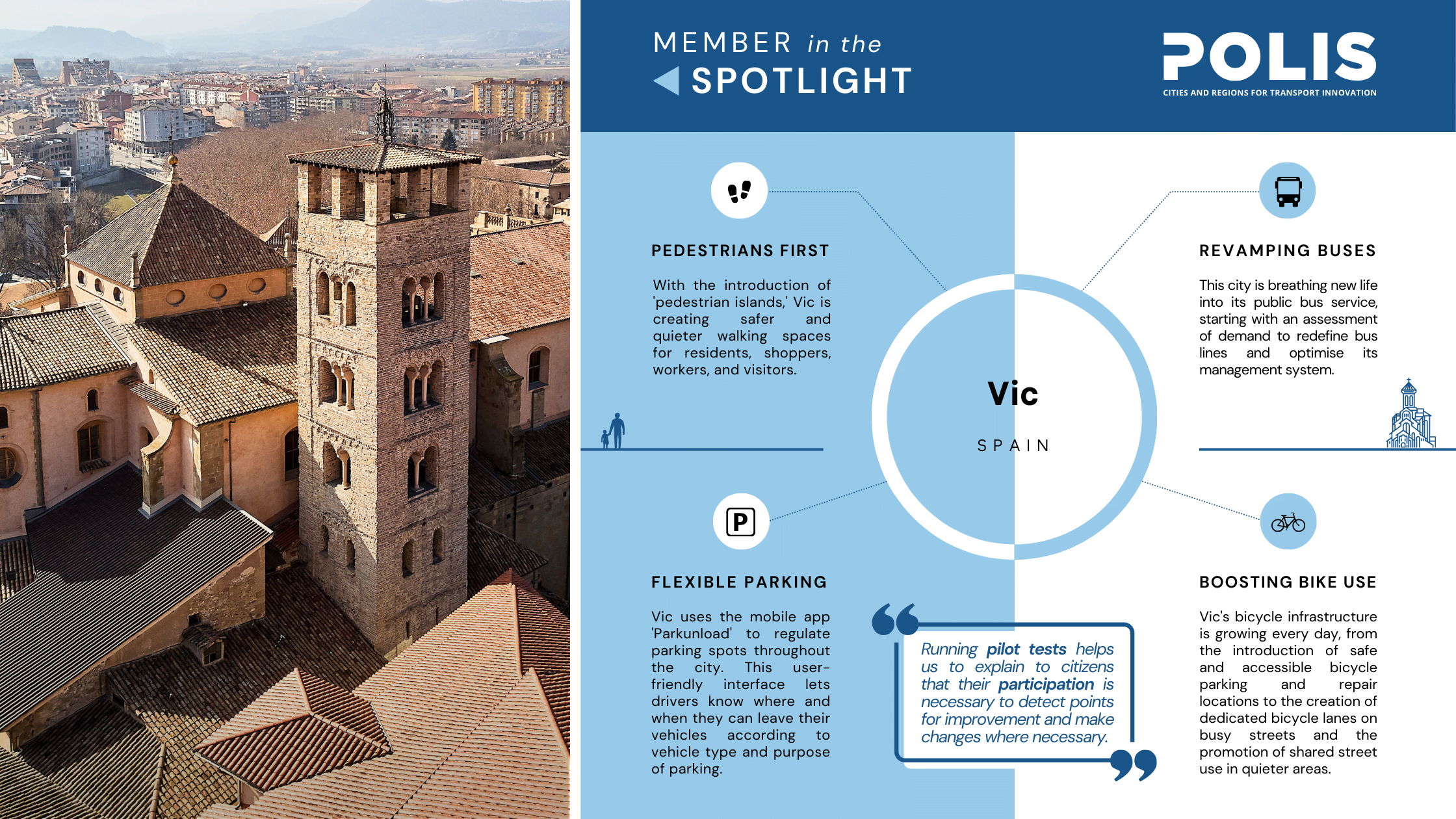
An overview of Vic's current measures in the area of innovative and sustainable mobility. Design by Quaid Cey.

